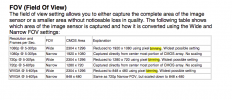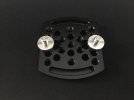D
Deleted member 37895
Guest
Pixel binning is not downsampling.
Downsampling is done via software with already existing digital images and is a method for disposing of pixel information
Pixel binning is a hardware term having to do with the concept of combining the electrical charges of neighboring pixels on the sensor and this technique increases S/N ratios.
That would require combining 4 adjacent pixels into each final pixel which isn't what the Mobius does. Just because a Chinese translator uses a term doesn't mean it's accurate
https://www.dpreview.com/forums/thread/3922435


